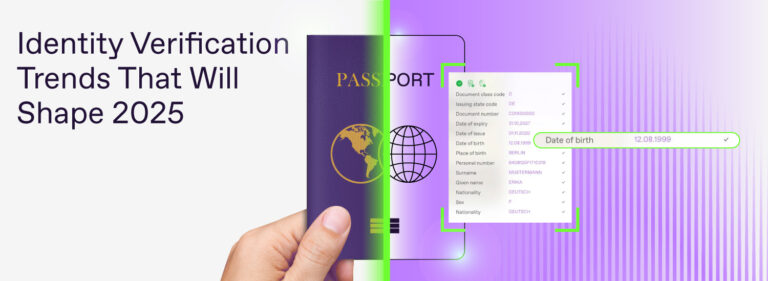Technology Advancements in Identity Verification
Regula, a global leader in forensic devices and identity verification solutions, has outlined its vision for the identity verification (IDV) industry in 2025. As cyber threats grow more sophisticated and regulatory frameworks evolve, businesses must adapt to emerging technologies to safeguard identities and maintain compliance.
The Rising Threats in IDV
Over the past two years, identity fraud has surged across industries, particularly in Finance, Banking, FinTech, and Crypto. The widespread use of deepfake technology poses a significant challenge, with businesses increasingly vulnerable to fraudulent biometric submissions. Liveness checks for both biometrics and documents will become essential, but they must be reinforced with signal source integrity measures to prevent manipulation.
Deepfakes have reached a level where even trained professionals struggle to distinguish between real and fake identities. As a result, organisations must adopt hardware-enabled verification to confirm the authenticity of biometric and document submissions. Additionally, businesses will continue enhancing biometric verification techniques, including facial recognition, fingerprint scanning, and voice authentication, to strengthen security measures.
While emerging threats demand attention, traditional methods of fraud—such as fake IDs and synthetic identity fraud still account for the majority of identity crimes. This underscores the need for a balanced approach that addresses both sophisticated and conventional fraud risks.
Regulatory Compliance and User Expectations
The IDV industry is facing increased regulatory pressure as governments enforce stricter identity verification laws, particularly in age-restricted services and financial transactions. As part of these measures, biometric age estimation is gaining traction to ensure compliance with age verification requirements.
Beyond regulation, user expectations are also shaping the industry. Consumers now demand seamless, efficient, and personalised verification experiences. Businesses are responding by adopting user-centric IDV solutions that prioritise convenience without compromising security.
A new user category is also emerging in identity verification: employees. With remote and hybrid work models becoming the norm, companies must verify workforce identities to prevent fraudulent hiring practices, including fake identities and ghost employees.
Technological Innovations in IDV
The growing complexity of fraud and compliance requirements is driving the adoption of cutting-edge identity verification solutions. One major trend is the transition toward digital identity documents, such as Digital Travel Credentials (DTC), mobile driver’s licenses (mDLs), and national digital identities. These innovations aim to provide more secure and efficient verification methods.
Beyond document and biometric authentication, identity verification systems will increasingly integrate with government and issuing authorities’ databases for real-time validation. This ensures a higher level of accuracy and security in the verification process.
Another emerging trend is Journey Time Orchestration (JTO), a platform-driven approach that manages identity verification tasks dynamically throughout the user journey. By unifying biometrics, passwords, and third-party authentication systems, JTO enables businesses to strike a balance between security and user convenience.
Furthermore, artificial intelligence (AI) and machine learning (ML) are playing a pivotal role in IDV. While these technologies have been in use for some time, their significance will grow as AI-driven fraud becomes more advanced. Organisations will need to leverage AI to detect and counter evolving fraud tactics effectively.
The Future of Identity Verification
As the industry enters 2025, identity verification will be shaped by a combination of advanced security threats, stricter regulatory mandates, and growing user demands. Businesses must stay ahead by implementing adaptive IDV solutions that blend security, compliance, and user experience.
Ihar Kliashchou, Chief Technology Officer at Regula, emphasised the importance of these developments: “The identity verification sector is shaped by evolving threats, increasing user expectations, stricter regulations, and rapid technological progress. As we move into 2025, the challenge will be to create solutions that not only address sophisticated fraud but also prioritise user convenience and regulatory compliance.”
With a proactive approach, businesses can navigate the evolving identity verification landscape and build a more secure digital future.
